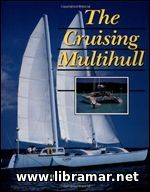 Chris White wrote the book which we are now presenting to your attention, with the intention to supply readers with the very latest info on the design and construction matters, rigs and safety, seamanship techniques and all other issues related to the multihull cruising. It will definitely assist people in determining whether the multihull is the right choice for them. And the main objective of the book, of course, was to tell readers how to take maximum from their boats.
The publication provides an extremely thorough survey of the modern multihull boats. The amount of the material included in the book, and its quality, make it equally valuable to the strangers to such boats, and to the professionals in cruising the multihulls. We enthusiastically recommend it to both categories of boaters. Though it was written and released some time ago, the actual physics of sailing the multihull boat remains unchanged.
In addition, there have no changes been made in the construction materials happen during the past decades - same glass, carbon, epoxy, wood, foam and polyester are being used today. That is why we insist that this book did not lose even a smallest part of its topicality and highly recommend it for use.
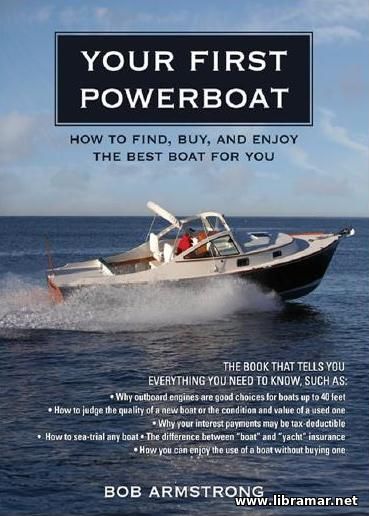 Your boat may be one of the biggest investments in your life, just next to your home. Buying a boat and owning it implies making one tough decision after another. This book shall be treated as the essential guidance providing a method to purchasing and owning boats - it will answer so many questions that the novice boat owner will have, including how to avoid buying a boat that they will never use, how to choose a proper option for powering the boat, how to negotiate the very best deal on any brand new or used boat, how to perform necessary boat survey without having to employ someone else.
The reader will understand why it often make sense to go for the fractional ownership option. They will also get to know about the important and necessary financial matters such as calculating cost of the ownership. All the tips provided in this publication will help readers to save their money when buying a boat for themselves. The author is the Captain licensed by the USCG and experienced marine surveyor - a perfect combination to advice newcomers on proper sizing and valuing a boat. His efforts and time spent when preparing this book resulted in the excellent practical guide for buying and maintaining a boat.
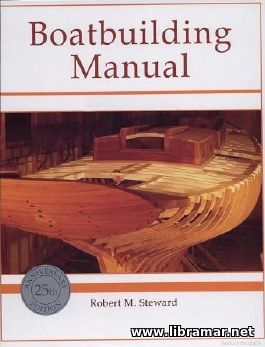 This Manual was first published in 1970 and for so many years various editions of the book have been used as the standard reference in boat design and construction nearly everywhere - in the boat design schools, yards, workshops - it is also very good for home boat builders. In fact, there as been no any other boatbuilding manual to serve the needs of both amateur and professional builders so perfect.
We would say that this publication is mandatory for anyone involved in new construction or rebuilding a wooden sail- or powerboat. The book will make life much easier for all of them. It is essentially a textbook of boatbuilding and shall be treated as an introduction for amateurs and even newcomers. The material in the book is well-presented and quite easy to understand. The illustrations provided by the author, are very nice and informative - they make reading even more pleasant.
We highly rate this publication and may recommend it, taking into consideration the number of topics covered, including such the important ones as basic plans and tools, hull materials, laying down, setting up, decking and framing, molds, construction templates, finishing, tanks, steering arrangements, mechanical and electrical issues, safety, deck and interior joinerwork etc.
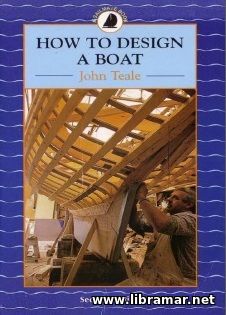 Here is a pretty straightforward guide prepared by John Teale to take the beginner sail- and powerboat boat designers step-by-step through the most important stages of the process. The author explains the reasons standing behind the procedures covered in this book, and uses the very typical drawings and lines plans for illustration. The first edition of the book was published some time ago and has proved to be a true bestseller.
The book starts with a fairly simple boat design and then the complexity and size of the boats grow as the readers progress, from chapter to chapter. There are many boat types addressed in this publication, both small and large ones, and the knowledge imparted by the book to the novices may easily provide incentive for launching a new career in boat and yacht design. The explanations have been presented is such the easy-to-understand way that even the first-time boat designers will find it suitable and very helpful for themselves. In this second edition, some calculations have been simplified even more and some new boat designs have been added.
Take a time reading this book and you will better understand the decisions that are taken by the boat designers and understand what usually people mean when they are talking about technicalities...
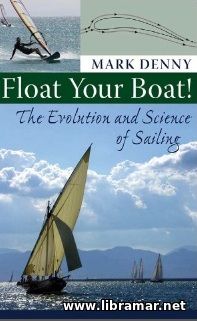 According to the official statistics, more than four million people in America are involved in recreational sailing activities; yet the huge library of available literature on sailing leaves the majority of them high-and-dry. In fact, on one side there are purely technical guides for the pro's while on the other there are pretty simplistic publications suitable for weekend sailors having little to no interest in science.
In this publication named Float Your Boat, both amateur and professional boaters will find understandable and very intelligent answers to the most important questions that may arise. Among the numerous interesting topics covered by the author, Mark Denny, who is a genuine sailing enthusiast, there are key innovations making the sailboats more efficient, how can the speed of a boat get increased, how do the sailboats travel in windy weather, and even why there are so many wrong explanations of sailing.
The author traced the evolution of the sailboat throughout the history. This book will definitely serve as a very accessible and easy guide to the physics of sailing for all categories of boat owners and owners, from newcomers to professionals, and we promise that no one will be disappointed with the contents and how the material has been presented.
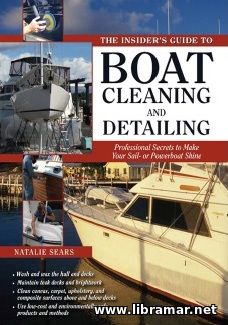 Cleaning the boat is not as easy and simple as scrubbing its surface away with a kitchen cleanser since wrong procedures can easily damage your boat or the environment around. The book presented to your attention is not just a stern-to-stem guidance covering literally all aspects of boat detailing and cleaning processes.
It recommends readers both brand-name and quite generic boat hull cleaning and maintenance materials in order to help them make proper selections. The text materials provided in this book are supplemented with a huge number if before-and-after photographs showing readers how to keep their boats looking nice and protect their market values, how to achieve best results with minimum possible efforts and using the environmentally safe methods. how to use checklists and data tables to keep the work efficient and duly organized.
The publication will definitely be very helpful for everyone owning a boat, and it makes no difference whether the reader owns a small seventeen-feet console of a large forty-five-feet cabin cruiser. The book starts with the explanation of what the oxidation is and how it affects fiberglass, providing some advice on how to protect the boat's hull from oxidation or remediate if, if already occurred...
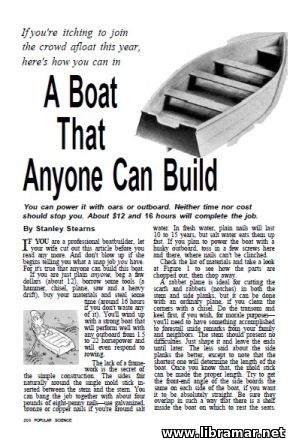 This is just the short yet quite valuable and informative excerpt taken from the "Popular Mechanics" magazine dated half-a-century ago. The readers who decide to have a look into this small booklet will be told, very briefly, how to construct a simple boat with their own hands and without having to involve third party professionals; in addition, there will be no serious money required.
As declared by the authors of this mini-textbook to the boatbuilding, this new construction project will cost you almost absolutely nothing - say about dozen of bucks, and it can be completed in only sixteen hours; moreover, the newly built boat may be either oar-powered or moved using the outboard engine. Just try, because summer is coming! All necessary plans, sketches, and technical data inside. The authors insist that literally anyone can build a boat - you just have to find some dollars to get the necessary materials for construction.
Then, provided you have some sixteen hours (usually not more unless you plan to waste the time), you may start. One of the secrets of this simple construction is the lack of any framework in the design. The sides of t e boat will fair around the single mold stick which is inserted between the stern and the stem, in a natural way...
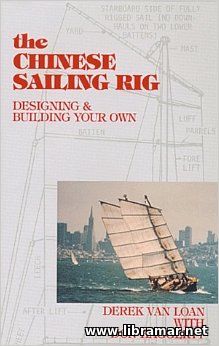 This guide dedicated to the Chinese sailing rig guide has been developed on the basis of the information collected during many years of designing, building and sailing Chinese lug rigs. Despite quite compact sized of the publication, it really contains huge amount of useful information and may be treated as a perfect addition to any collection of nautical history books.
The book is remarkably reader-friendly and provides all info about the construction of the seaworthy boats. the text is full of photos included to illustrate all stages of construction. In short, it is very informative and handy book - note that everything presented in the pages of this book has been already tried and done so you may rely on the information contained herein. The publication is recommended to any reader with the interest in naval history and vessels of the past and who are willing to know some more about the Chinese rigs and how the western hulls could be adopted.
Of course, you do not have to be a professional shipbuilder or naval historian to enjoy reading this book. By the way, some of the info presented will definitely interest ship modelers who may use it when making the model of ships of that period.
« 1 2 ... 4 5 6 7 8 ... 14 15 » |







